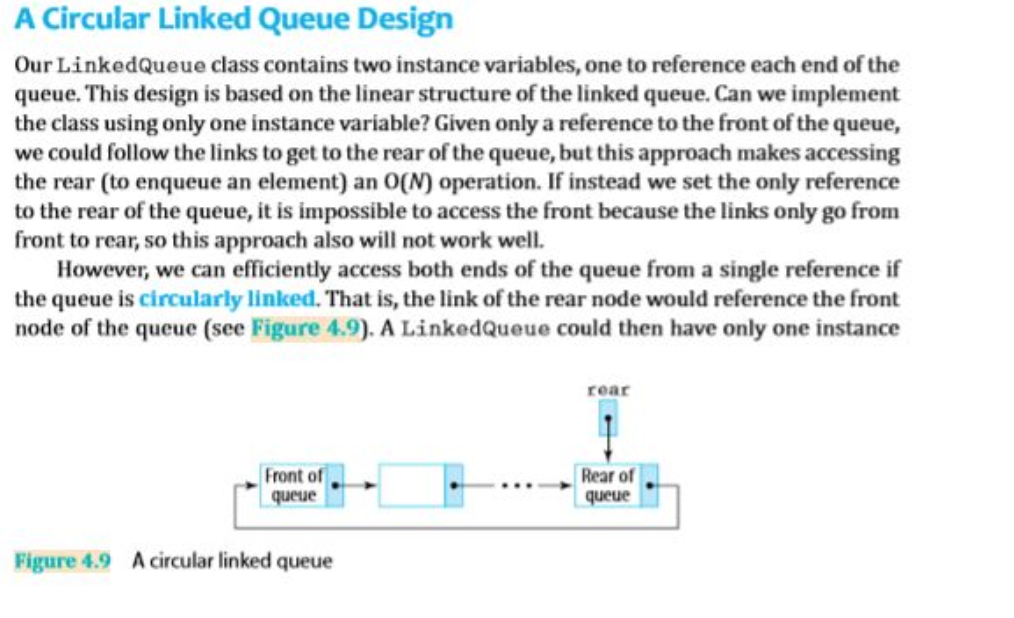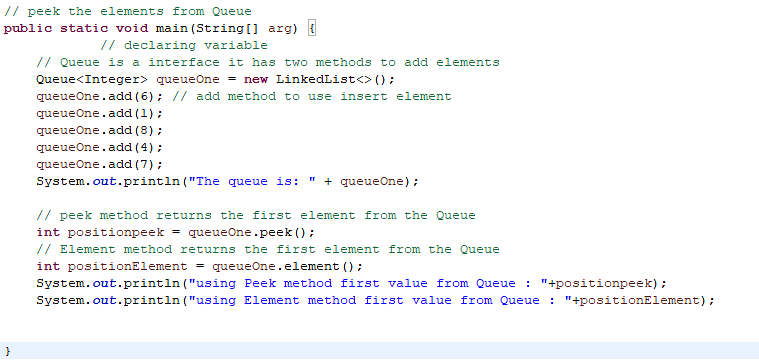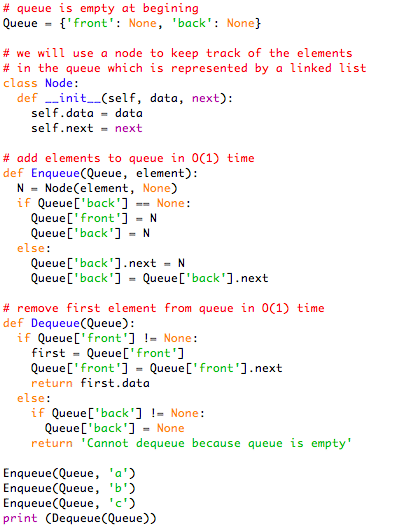

Doubly LinkedList Node is constructed of the following items.
Creating linked lists and queues in Java are rather similar to the same operations and data structure that you might have enountered in CSC161 and C. In this lab, you will switch to implementing a singly-linked queue using a linked-list to store data. The difference is that we will be using the Linked List data structure instead of Array. We will implement the same methods enqueue, dequeue, front, and display in this program. Sorry for the poor image quality - I just drew it in paint.In the last few labs, you have worked at implementing some canonical data structures using an array as the underlying storage structure. As we have implemented the Queue data structure using Arrays in the above program, we can also implement the Queue using Linked List. I would again emphasize that stacks/queues can be implemented by enforcing restrictions on linked lists. No, that would result in an undesirable behaviour. So when you say: tNext (tmp) you are tagging the new node after the last node of the queue. They are used to point to the first and last nodes of the queue. In both the cases, you wouldn't want an arbitrary removal or insertion of elements at any index. From what I can understand from the code, front and rear are simply pointers. This makes queue an excellent data structure to process jobs on a first come first serve basis. When performing a job, you would (not considering any optimization algorithms) serve the one first to arrive. peek() / top(): This function is used to get the highest priority element in the queue without removing it from the queue.
pop(): This function removes the element with the highest priority from the queue. Queue Implementation using Linked List in Java Author: Ramesh Fadatare Data Structures Queue < Previous Next > DS and Algorithms in Java In this article, we will discuss the implementation of Queue using Linked List.push(): This function is used to insert a new data into the queue. Similar could be said for queue which is FIFO (First In First Out). Implement Priority Queue using Linked Lists. Operations that index into the list will traverse the list from the beginning or the end, whichever is closer to the. All of the operations perform as could be expected for a doubly-linked list. Implements all optional list operations, and permits all elements (including null ).

Thus the concept of First In (which was Site A) and Last Out (the last one to go in was Site D which in turn became the first one to go out) Doubly-linked list implementation of the List and Deque interfaces.

Then when the user hits back button, you pop the one at the top (removing from tail - the same end used for insertion) which gives the last visited site - C. This ensures that the current site is always at the top of the stack. The difference is in the type of the variable. The stack must allow to store any object type and you must implement at least the following.
Each list is to maintain tasks with the same priority. The two statements youve written each construct a LinkedListYou have 3 kinds of priorities, so you have 3 lists. All the above information can be handled by your PriorityQueue. As a user moves ahead, you first push (insert at tail) the list of websites. You have a few tasks to do, and each task has a priority.

You navigate to Site A -> then B -> then C -> D. dequeue () removes the last element of the queue. There are 5 primary operations in Queue: enqueue () adds element x to the front of the queue.
JAVA QUEUE LINKED LIST CODE
Heres the code and the output is below it. We can implement Queue for not only Integers but also Strings, Float, or Characters.
JAVA QUEUE LINKED LIST DRIVER
Stacks and queues have their own reason of existence.Ī stack is a FILO (First In Last Out) or LIFO (either ways) data structure that could be implemented using arrays, linked lists or other forms. Im trying to make a linked list implementation of a queue in Java and in my driver program after I dequeue some elements, the size is not adjusting to be a lower number like it should.


 0 kommentar(er)
0 kommentar(er)
